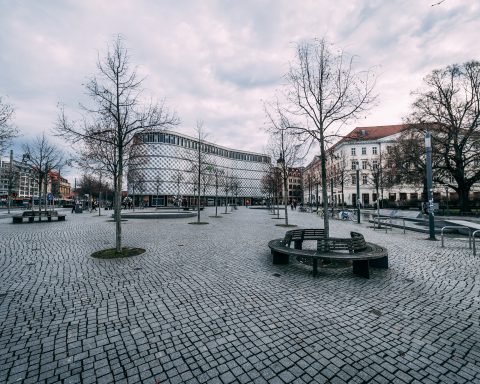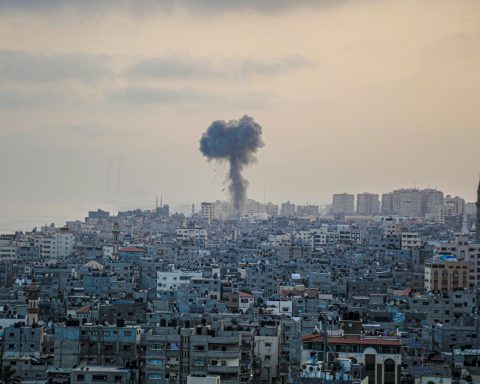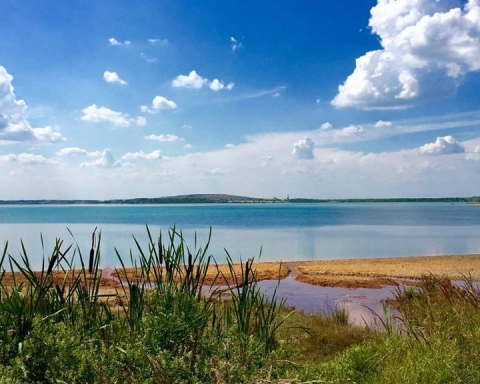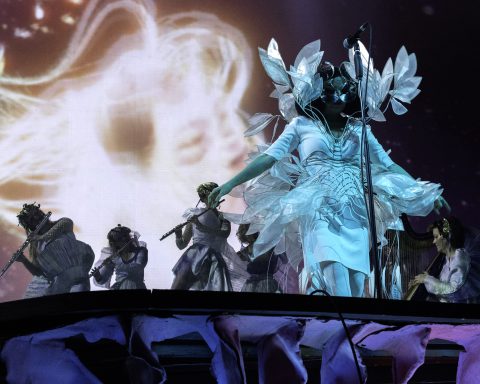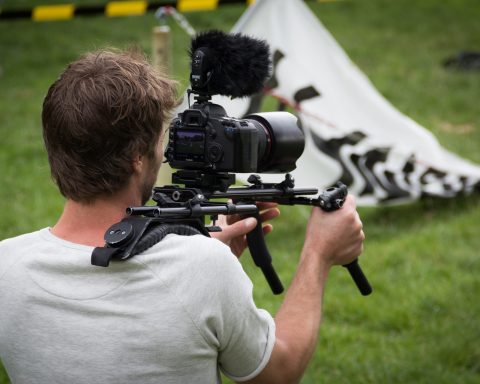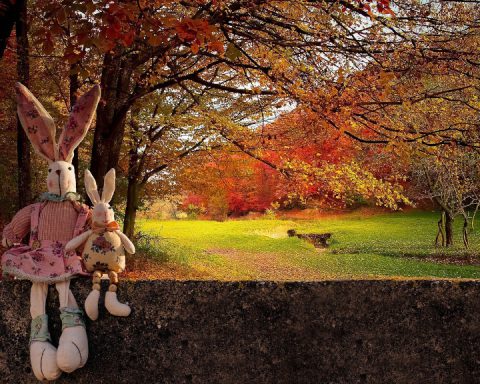As a sociologist, I have read lots on denial. But as a tourist, I have actually experienced it. I will offer a couple of striking examples here, involving maps and urban geography.
Dubai
In Dubai, the line between reality and fantasy is very thin.

On maps, it is nonexistent.
Charming islands on the map may actually be real or a figment of somebody’s imagination. A few years later, the builders may make the map come true to the world.
The same goes for subway stops. They are on the map, but have not been built yet. The map is indicative – of the future yet to come true.

My companion and I once spent an entire day trying to reach a pink flamingo nature park.
In the process, we tried to reach a yet nonexistent subway stop, had to get off at the real end of the line, tried to catch a yet nonexistent bus, went back to the town center, got on an existing bus, and spent nearly two (hot and frustrating) hours on that bus merely to get out of the center – only to realize it was the “wrong” bus after all. It had taken us to, and then through, an industrial zone separated by a broad highway from the pink flamingo nature park. So we got off that bus and tried to hitchhike.
After feeling ridiculous and exposed, we experienced heights of elation, when actually hitching a ride and enjoying a conversation with two traditionally dressed men in white, who kindly deposited us at the desired flamingo lookout.
Well, you would think at this point all is left to say is: All is well that ends well. But, no, the flamingos also turned out to be a pink figment of somebody’s imagination. The guide or leaflet spoke of tens of thousands, imported from this and that country. Very special. Well, you can spot ten to your right. The remaining few are too far away. At least they are all pink. But the grass is still to grow and water still has to be supplied.
A few pink flamingos standing in mud, long stretches of it, is what you get to see for all your – in this case not overstated – trouble.
OK, that was that then. No matter how much you strain your neck and eyes, there is no more to be seen. Time to get back to the hotel. But how? There is a bus stop, but no bus schedule and no bus. Being a quick learner, you take to hitch-hiking again. It is a humiliating experience for somebody in your age group, but what else can you do?
Lucky again. A group of colorful young tourists in a jeep picks you up. This time no conversation, but they bring you to Burj Khalifa. We feel too dusty to enjoy, but are grateful that this adventure is over.
So to sum it up: You may try to reach different destinations and metro stations, only to find out they have not been built yet. Since the citizens drive by car and the massive foreign labor force has very circumscribed public transport routes, locals will not know, and therefore will be of no help. For all I know, they all believe in what they see on the maps – as I did before I put them to the test.
Funnily enough, as a tourist, you may err also in the opposite direction. Had my daughter not enlightened me, I would persist in my belief that the Dubai metro still does not end all the way at the airport. It does by now. Try it!
Losing your patience now, you might ask what all this, including maps and pink flamingos, has to do with denial.
Well, here is what I think. Perhaps oral history and book tradition are very strong in Dubai and the Emirates (UAE) too; perhaps the future will reveal a rich past. But for now, if you go to the UAE’s Sharjah Archaeology Museum, you will see artifacts from Persia and the Ottoman Empire, but not specifically from the area.
There is one archaeological excavation site on Dubai’s map. And in Dubai’s center – as pretty and interesting as it is – the historical museum and the reconstructed airy architecture can fill but a nutshell.
It is enough to see a few documentaries about the sheiks and their drive to cover up the desert to put two and two together. They have the means and they have the vision, so they hire the best architects with the most striking ideas.
The most recent creation just opened up: Louvre in Abu Dhabi.
Sheiks imagine and live in the future. In this future, the desert is all covered up. The new islands, the new architecture, the arts, the parks – the talk of the town. The desert of the past is effectively denied.
Kyoto
This was the second time I was in Kyoto, and I probably would not have noticed it even this time around, had I not decided to see the reenactment of an ancient haiku-writing and sake-drinking ceremony at a temple. I had several Kyoto-made maps, but on none of them could I find the temple. I think I finally found the subway stop closest to the temple and, once there, was told to take a bus.
But the question remained, as to how come I could not find the temple on the map.
At some point, it dawned on me that all maps that I had of Kyoto ended at its magnificent new main railroad station. But I had gone beyond it on my way to the temple.
One evening, I was invited to what turned out to be a lovely, 17-course dinner in a northern part of Kyoto. The restaurant is situated in an ancient Kyoto house, surrounded by a large garden and overlooking the Kamo River.
The luxury does not consist of sitting with another 40-50 buzzing or noisy people in the same room. On the contrary, guests enjoy being served in a room reserved exclusively for their company.
Every evening, only one elaborate meal is served to all guests. In picking the evening, one also picks a set menu.
My hosts were a graceful lady lawyer and her earthquake engineer husband, who had met in an arrow-shooting student club when young. They enjoyed explaining these customs to me, so I brought up the temple that was not on a map. I had to do a lot of explaining myself, though, before my hosts understood what I was talking about.
But then, it came out: “Kyoto ends at the Kyoto Station.” To those who live north of the station, this is Kyoto – no more, no less. For those who live south of it, Kyoto starts with it. They say “I have to go to Kyoto today” when they know their route will make them cross the railroad tracks.
At least this is what my hosts said. It follows that the Kyoto maps reflect the lived world of the city’s inhabitants.
In other words, the maps reflect how people, on both sides of the Kyoto Station, think of Kyoto.
Everything north of Kyoto Station is Kyoto proper. It is ancient, and much of its architecture is historical, bestowing upon the quarters and their residents an air of authenticity and status.

Everything south of Kyoto Station is not just different – it simply does not exist, at least not to the inhabitants of the north.
In Kyoto, this appeared to me as such a unique and curious phenomenon. But thinking back to it today brought to my mind the American expression “to live on the wrong side of the tracks.” This expression points to having been born or raised in depressed or working-class quarters, with many being really poor and of low social status, and often cut off by actual tracks going through. Skin color could play a role too.

New migrants and African-Americans would often live in separate areas “on the wrong side of the tracks” and, until after WWII, be placed in the same racial category. Only a few made it “across the tracks” as more than servants, the American myth of great upward mobility notwithstanding.

I wonder whether similar awareness exists in Kyoto, of living on the wrong side of Kyoto Station.
I also wonder what, if any, expression reflects this awareness and captures the experience of social exclusion following from an accident of birth. I do not think that American maps are as exclusionary as the Kyoto maps. But perhaps I am wrong.
On the other hand, Americans have the expression “to put x on the map” – as when two famous American scholars said to a colleague and me that we “were putting Leipzig on the map.”
Now that I think of it, Alina Strugut, as a PhD in the Critical Junctures of Globalization program here in Leipzig, went to a Romanian village for her field research and came back outraged. The Roma were not only on the wrong side of the tracks, up on a hardly accessible hill, but they were also deprived of access to water, hygiene, electricity, and roads because they had not been placed on the map when these were planned.
But she was a lot less outraged when she came back from an equivalent Spanish village. The Roma there wanted to live apart! At least that is how I remember it.
I have no more stories of the kind. However, in my first LeipGlo article on Hong Kong, I noted that there, the social divisions and imaginaries did not just run along the center-periphery urban divide, but between the urban up-in-the-air and down-on-the-ground.
The rich in Hong Kong walk marble walkways and can afford to sit down in a cafe. The mass of immigrant household helpers and babysitters walk or sit – often but not always in colorful, joyous groups – on the ground. This you cannot see on any Hong Kong map.

I would be curious to hear from Leipzig Glocal readers on other ways to cut up and cut out the various walks of life.

